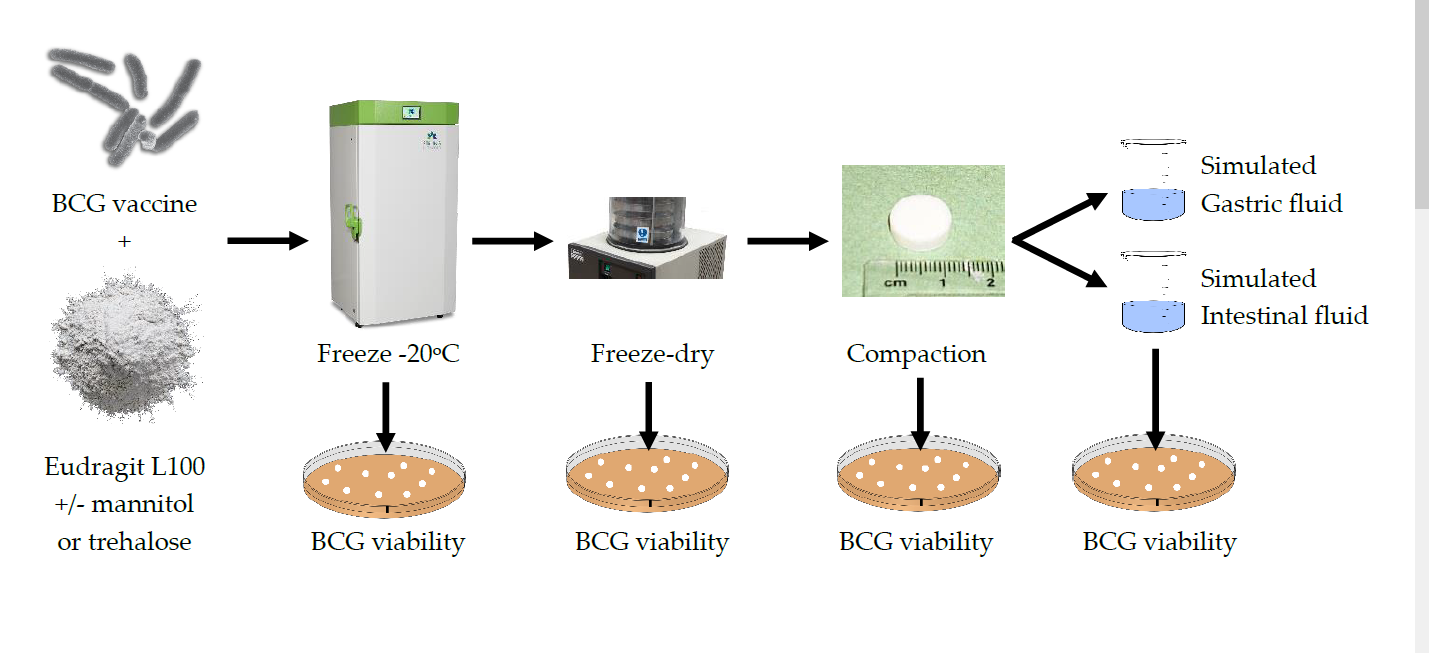Bacillus Calmette-Guérin (BCG) vaccine is the only licensed vaccine against tuberculosis (TB) in humans and animals. It is most commonly administered parenterally but oral delivery is highly advantageous for immunisation of cattle and wildlife hosts of TB in particular. Since BCG is susceptible to inactivation in the gut, vaccine formulations were prepared from suspensions of Eudragit L100 copolymer powder and BCG in PBS, containing Tween 80, with and without the addition of mannitol or trehalose. Samples were frozen at -20oC, freeze-dried and the lyophilised powders were compressed to produce BCG-Eudragit matrices. Production of the dried powders resulted in a reduction in BCG viability. Substantial losses in viability occurred at the initial formulation stage and at the stage of powder compaction. Data indicated that the Eudragit matrix protected BCG against simulated gastric fluid (SGF). The matrices remained intact in SGF and dissolved completely in SIF within three hours. The inclusion of mannitol or trehalose in the matrix provided additional protection to BCG during freeze-drying. Control needs to be exercised over BCG aggregation, freeze-drying and powder compaction conditions to minimise physical damage of the bacterial cell wall and maximise the viability of oral BCG vaccines prepared by dry powder compaction.

